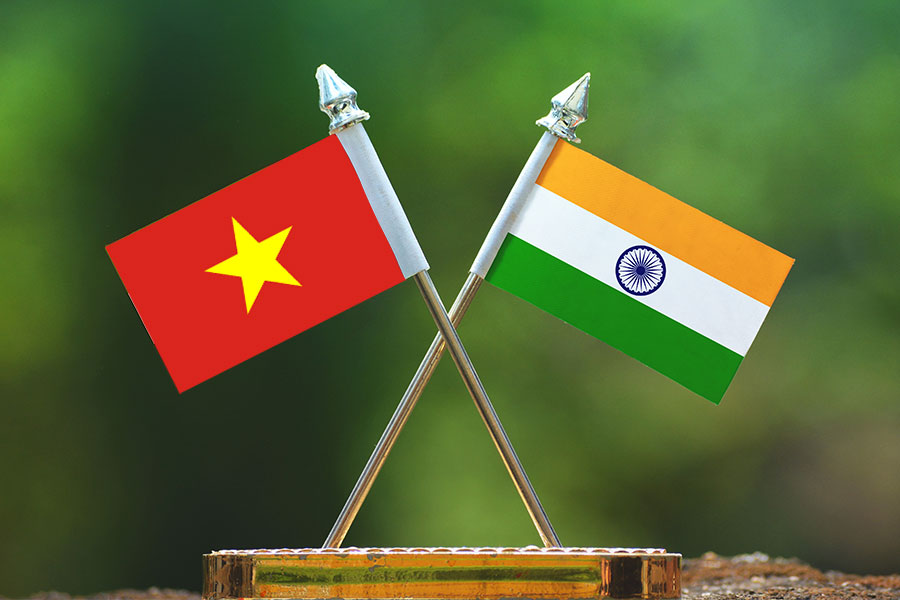
India Vietnam ties
India Vietnam ties
India Vietnam ties
IndiaVietnam ties, from strong to stronger—
India and Vietnam are celebrating the 50th anniversary of their diplomatic relations –
. Bolstering friendship between the two countries is a natural outcome of a growing convergence of their strategic and economic interests, and also their common vision for peace, prosperity and their people.
A strong commitment of political leadership along with the necessary institutional frameworks and cooperation between the two countries is likely to be more robust in the future.
More importantly, embedding a flexible frame work of engagement can contribute positively to regional stability and prosperity.
Shared concerns--
India is essentially a maritime nation and the oceans hold the key to India’s future.
India’s external trade (over 90% by volume and 70% by value) is by sea.
Very dependent on the seas for its trade and commerce, India has intensified its efforts to engage with maritime neighbours, including Vietnam. 1990s. As India pursues its ‘Act East Policy’, Vietnam has become a valuable partner in India’s political and security engagements in the Indo-Pacific region.
The two countries are working to address shared strategic concerns (such as energy security and open and secure sea lines of communication), and make policy choices without undue external interference.
Given India’s broadening economic and strategic interests in the region and Vietnam’s desire for strategic autonomy, both countries will benefit from a stronger bilateral relationship.
India and Vietnam face territorial disputes with and shared apprehensions about their common neighbour, China.
Vietnam is of great strategic importance because its position enables it to control ‘the South China Sea ‘a true Mediterranean of the Pacific’.
The maritime domain, therefore, has become an essential element of India and Vietnam cooperation.
There are four key motivations behind India’s growing maritime engagement with Vietnam--
(1)India’s aspiration to counter an assertive China by strengthening Vietnam’s military power.
(2)with India’s increasing trade with East and Southeast Asia, India has begun to recognize the importance of its sea lines of communication beyond its geographical proximity; the South China Sea occupies a significant geostrategic and geo economic position.
(3) India desires to intensify its presence to track potential developments in the maritime domain that could affect its national interests.
(4)the Indian Navy underlines the importance of a forward maritime presence and naval partnership that would be critical to deter potential adversaries.
India’s maritime strategic interests in the region are well established, including the fact that almost 55% of India’s trade with the IndoPacific region passes through the South China Sea.
Renewed interest in the maritime domain, freedom of navigation, a peaceful resolution of disputes and a respect for international laws have become salient features of the Indian approach.
The signing of joint vision for maritime co operation and a memorandum of understanding on mutual logistics support in June 2022 has further strengthened mutual defence cooperation.
While a U.S.$100 million Defence Line of Credit has been implemented, India has also announced early finalization of another U.S.$500 million Defence Line of Credit to enhance Vietnam’s defence capability. New Delhi has also agreed to expand military training and assist the Vietnam Navy’s strike capabilities.
For example, it is providing ‘comprehensive underwater combat operation’ training to Vietnamese sailors at INS Satavahana in Visakhapatnam.
India’s Defence Minister handed over 12 high speed boats to Vietnam recently’ a Khukri class corvette is also expected to be gifted soon.
Vietnam is also ‘exploring the possibility of acquiring Indian manufactured surveillance equipment such as unmanned aerial vehicles’.
